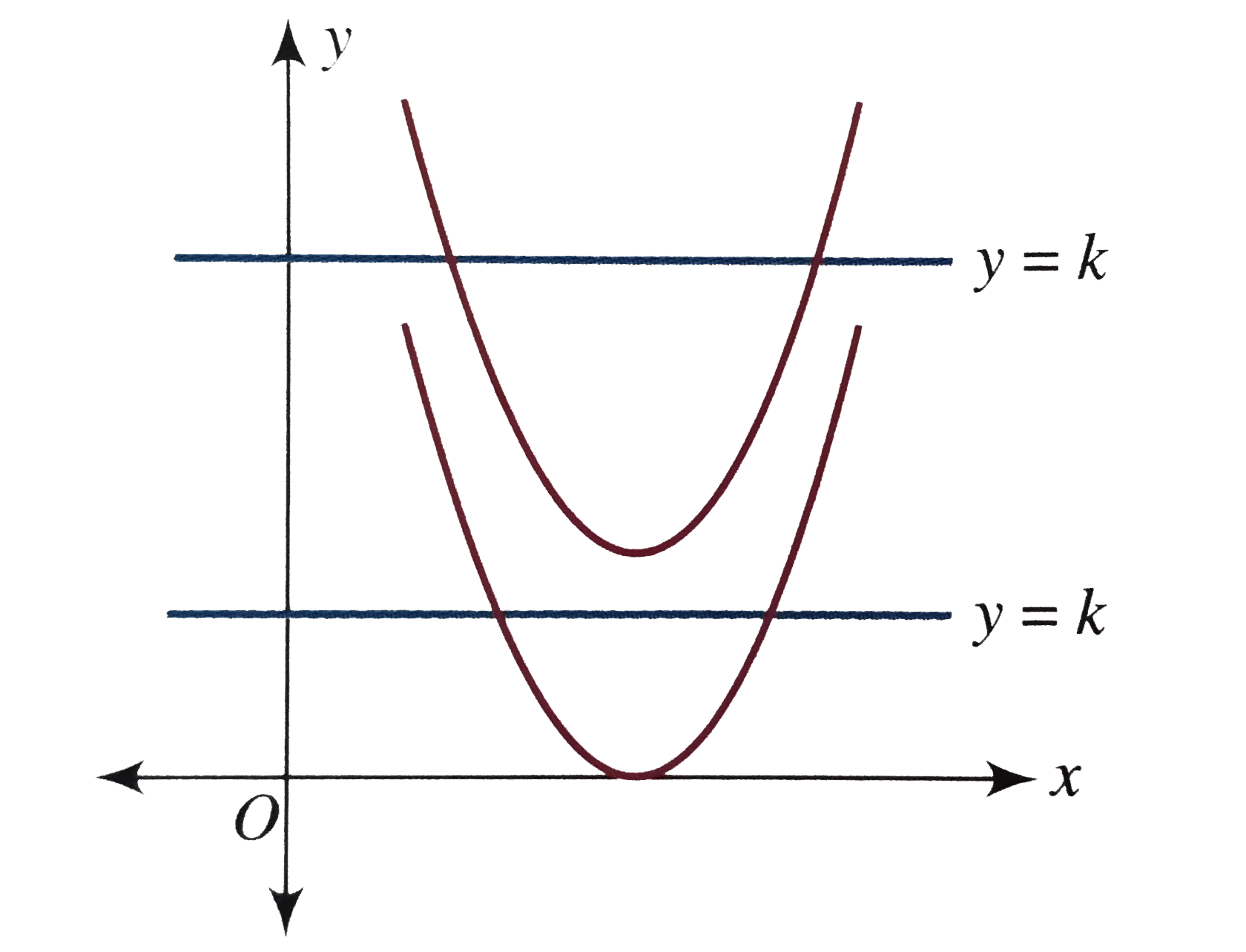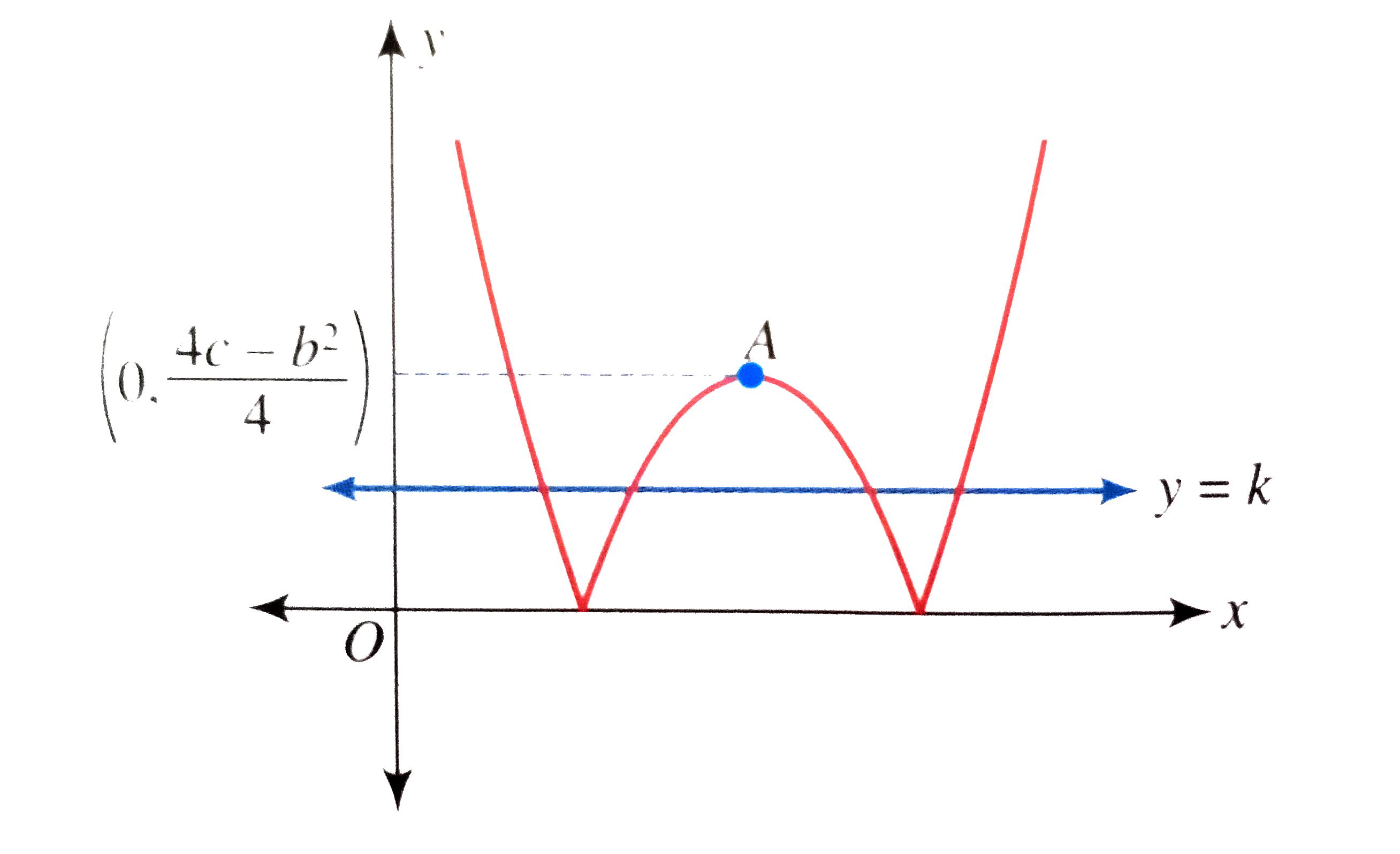If the equation ∣∣x2+bx+c∣∣=k has four real roots, then b2−4c>0and0<k<4c−b24 b2−4c<0and0<k<4c−b24 b2−4c>0andk>4c−b24 none of these
We have ∣∣x2+bx+c∣∣=k
For the equation to have four real roots, the line y=k must intersect y=∣∣x2+bx+c∣∣ at four points, which is not possible if D=0orD<0 as the possible graphas of y=∣∣x2+bx+c∣∣ will be as follows.

For the above graphs, the equation ∣∣x2+bx+c∣∣=k can have maximum two real roots. So for four real roots, we must have D>0, so the graph of y=x2+bx+c is as follows.

So the graph of y=∣∣x2+bx+c∣∣ will be as follows.

Now the equation ∣∣x2+bx+c∣∣=k will have four real if the line y=k intersects the above graph between the x-axis and point A.
Hence we have 0<k<4c−b24
Also D>0∴b2−4c>0.
Topper's Solved these Questions
- GRAPHICAL TRANSFORMATIONSBOOK - CENGAGECHAPTER - GRAPHICAL TRANSFORMATIONSEXERCISE - Exercise
22 Videos
- GRAPH OF INVERSE TRIGONOMETRIC FUNCTIONSBOOK - CENGAGECHAPTER - GRAPH OF INVERSE TRIGONOMETRIC FUNCTIONSEXERCISE - Exercise
18 Videos
- GRAPHS OF POLYNOMIAL AND RATIONAL FUNCTIONSBOOK - CENGAGECHAPTER - GRAPHS OF POLYNOMIAL AND RATIONAL FUNCTIONSEXERCISE - Exercise
13 Videos
Similar Questions
Knowledge Check
If the equation ax2+2bx−3c=0 has no real roots and 3c4<a+b, then
Ac<0Bc>0Cc≥0Dc=0
The equation ||x−a|−b|=c has four distinct real roots, then
View SolutionIf the equation x2+4x+k=0 has real and distinct roots, then k<4 (b) k>4 (c) k≥4 (d) k≤4
View SolutionIf the equation ax2+2bx−3c=0 has no real roots and (3c4)<1+b, then c<0 (b) c>0 c=0 (d) None of these
View SolutionIf the equation f(x)=ax2+bx+c=0 has no real root, then (a+b+c)c is (A) =0 (B) >0 (C) <0 (D) not real
View SolutionIf a,b,c∈R and the quadratic equation x2+(a+b)x+c=0 has no real roots then
View SolutionIf both roots of the equation ax2+x+c−a=0 are imaginary and c>−1, then a.3a>2+4c b.3a<2+4c c.c<a d. none of these
View SolutionIf the equation ax2+bx+c=0(a>0) has two real roots αandβ such that α<−2 and β>2, then which of the following statements is/are true? (a)a−|b|+c<0 (b)c<0,b2−4ac>0 (c) 4a−2|b|+c<0 (d) 9a−3|b|+c<0
View Solution
